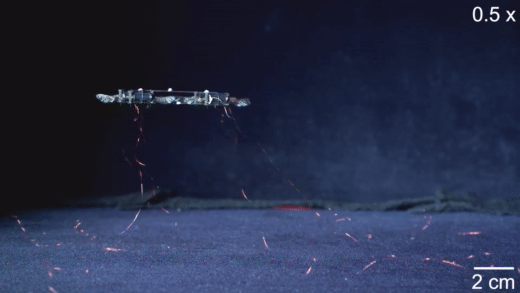MIT’s insect-sized drones are built to survive collisions
Insects are a lot of things - but fragile they're not. Sure, most can't withstand the full force of a human foot, but for their size, they're evolve to be extremely rugged and resilient. Insect-sized technology, on the other hand, is general another story.
That's certainly been the historic case with scaled-down drones. The components, in particular, tend to become more fragile the more you shrunk them. In particular, motors both lose efficiency and weaken the smaller they get.
Earlier models from the MIT lab have relied on rigid ceramic-based materials. They did the job in terms of getting the robot airborne, but as the lab notes, foraging bumblebees endure a collision about once every second." In other words, if you're going to build something this small, you need to ensure that it doesn't break down the first time it comes into contact with something.
The challenge of building small aerial robots is immense," says MIT Assistant Professor Kevin Yufeng Chen.
New drone models, which the lab describes as resembling, a cassette tape with wings," are built with soft actuators, made from carbon nanotube-coated rubber cylinders. The actuators elongate when electricity is applied at a rate up to 500 times a second. Doing this causes the wings to beat and the drones to take flight.
The drones are extremely light weight, as well, coming in at around 0.6 grams - basically as much as a big bumble bee. There are still limitations to these early models. Namely, the system currently requires them to be hardwired to deliver the necessary charge - as seen in the below gif. It can be a bit of a mess. Other modifications are being made, as well, including a more nature-inspired dragonfly shape being used for newer prototypes.

Image Credits: MIT
Should such the lab be able to to produce such a robot untethered with imaging capabilities and a decent sized battery, the potential applications are immense for the tiny drones. You've got everything from simple inspections currently being handled by larger models to pollination and search and rescue.